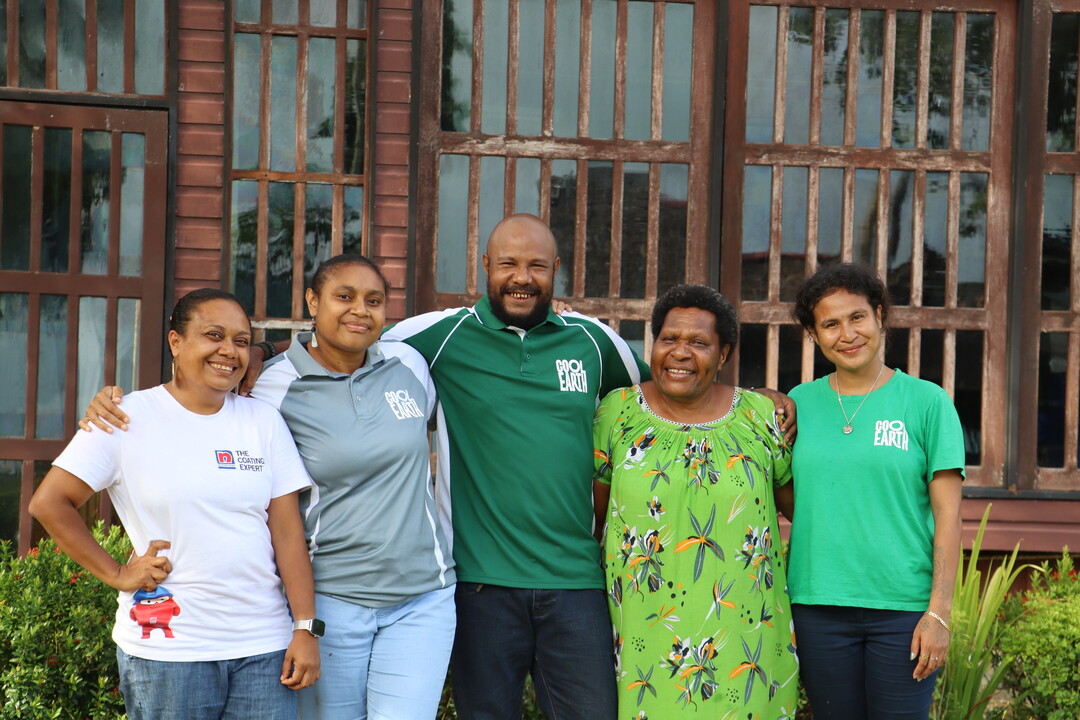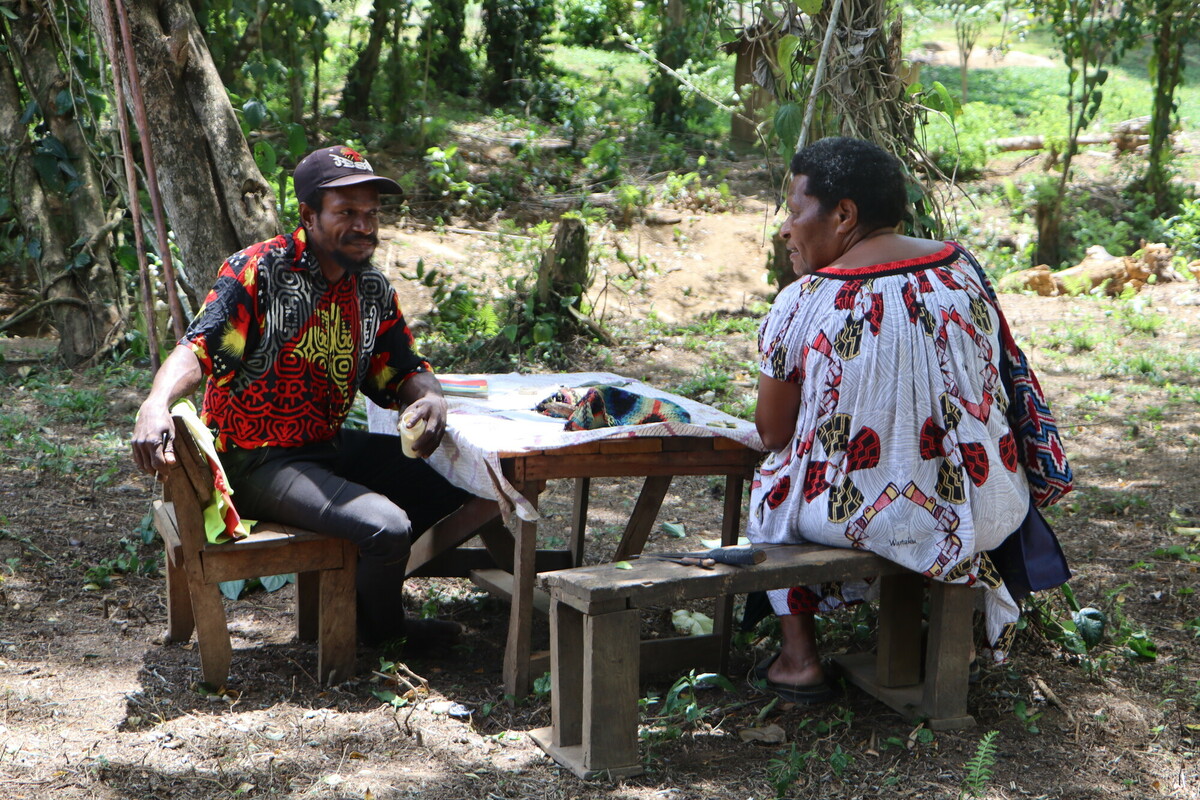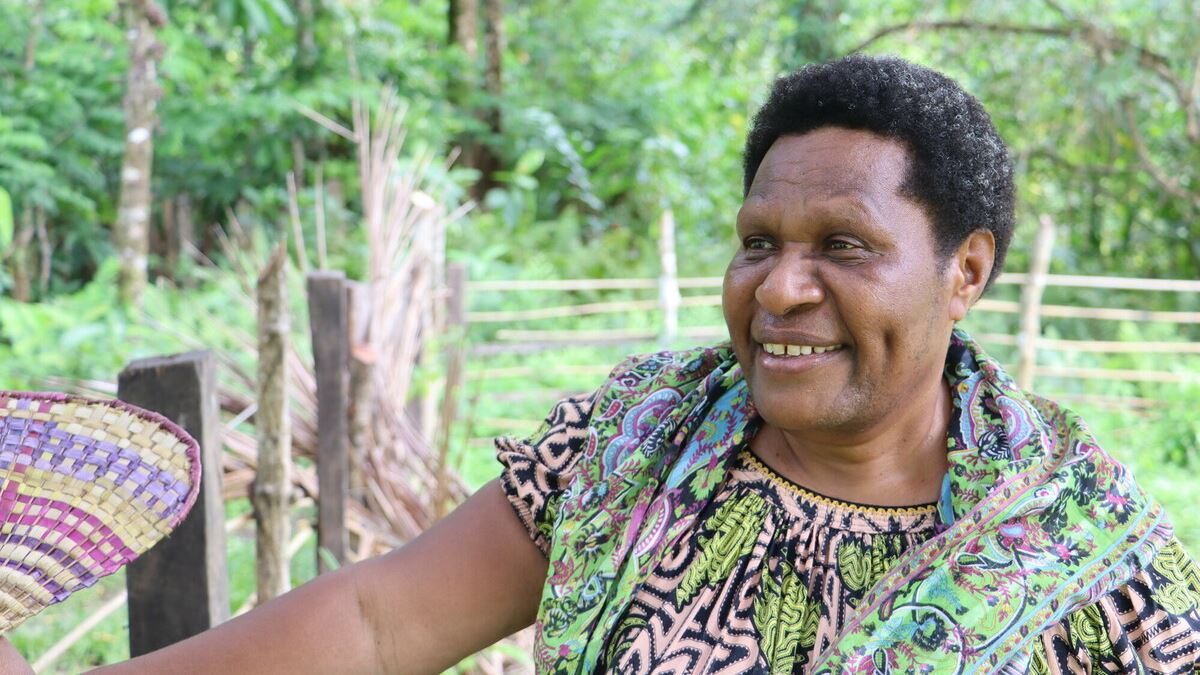This is the story of Regina Kewa, who left a 20-year career in the mining industry to instead protect rainforests in Papua New Guinea with Cool Earth.
Regina had worked for years with a mining company, supporting rainforest communities that had been impacted by mining activities – including those displaced from their original land. But after 20 years, Regina decided to make a bold leap and join Cool Earth in protecting rainforests and supporting communities directly.
She now helps communities ward off mining and logging industries and instead empower communities to protect their land and traditional lifestyles. Today, Regina leads Cool Earth’s work in Papua New Guinea, helping five partner communities improve their livelihoods while ensuring their rainforests thrive.
“I used to do a lot of sustainable projects for mining-impacted communities. On the other side of the coin, I wanted to know what the NGOs were doing, so I joined Cool Earth,” Regina said.
“With Cool Earth, it’s very interesting because our programmes are focused on local people, believing in them as the key to forest conservation,” she said.

Mining’s Toll vs. Healthy Rainforests
In Cool Earth’s rainforest communities, life flourishes. Towering trees, lush gardens, and vibrant wildlife create a sustainable way of life. Families harvest produce, sell it in markets, and receive unconditional cash support, all while protecting their forests.
Mining-impacted communities, on the other hand, face a grim reality. Forests have vanished, leaving barren gardens and polluted rivers. Wildlife has disappeared, and people often live in displacement, struggling to rebuild their lives.
“You’re trying to rebuild and bring those things back, but I don’t know when that’s going to happen,” Regina explained.
Decades ago, decisions to allow mining were made without understanding the long-term consequences. Now, these communities are slowly replanting trees and working to restore what was lost, but it’s an uphill battle.

A Glimmer of Hope
Regina’s work with Cool Earth has reshaped her outlook.
“Working with Cool Earth has had a big impact on me. I’ve come to see the importance of trees, birds, and rivers. I have the power of influence, and I tell my people who are also affected by the mine to plant trees for future generations.”
Rainforest communities thrive by rejecting destructive practices and protecting their forests. Their success shows that conservation is not just possible, it’s vital for the future of our planet.
Editors notes
- Cool Earth partners with Indigenous Peoples and Local Communities who live in the rainforest and who have historically been the best at shaping and stewarding these ecosystems.
- Protecting the three largest rainforests in the world is the most scalable and cost-effective solution against the climate crisis.
- Founded in 2007, Cool Earth pioneered an unconditional cash transfer model to support Indigenous peoples and local communities against threats to their lands and rights.
- Supported by a board of trustees led by Dr Tony Juniper CBE and including people such as Gillian Burke, as well as ambassadors such as Johan Rockström, Cool Earth is committed to developing rights-based approaches as essential solutions to the climate crisis.

